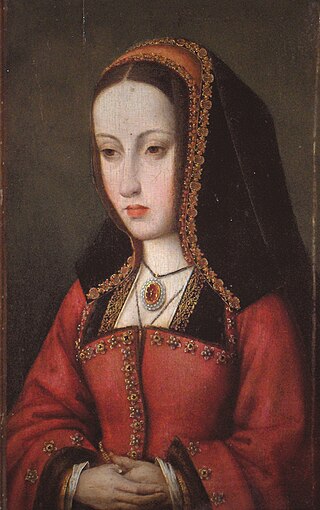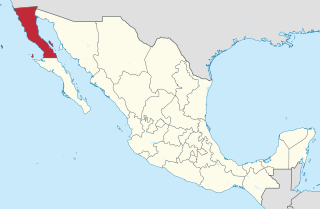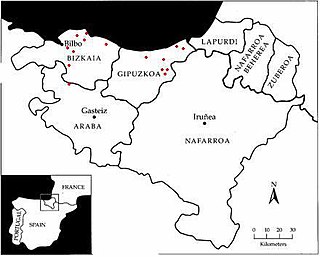Contents
| |||||
| Decades: | |||||
|---|---|---|---|---|---|
| See also: | Other events of 1749 List of years in Spain | ||||

Events in the year 1749 in Spain .
| |||||
| Decades: | |||||
|---|---|---|---|---|---|
| See also: | Other events of 1749 List of years in Spain | ||||

Events in the year 1749 in Spain .

Ferdinand VII was King of Spain during the early 19th century. He reigned briefly in 1808 and then again from 1813 to his death in 1833. Before 1813 he was known as el Deseado, and after, as el Rey Felón.

Ferdinand VI, called the Learned and the Just, was King of Spain from 9 July 1746 until his death in 1759. He was the third ruler of the Spanish Bourbon dynasty. He was the son of King Philip V and Queen Maria Luisa.

Joanna, historically known as Joanna the Mad, was the nominal queen of Castile from 1504 and queen of Aragon from 1516 to her death in 1555. She was the daughter of Queen Isabella I of Castile and King Ferdinand II of Aragon. Joanna was married by arrangement to the Austrian archduke Philip the Handsome on 20 October 1496. Following the deaths of her elder brother John, elder sister Isabella, and nephew Miguel between 1497 and 1500, Joanna became the heir presumptive to the crowns of Castile and Aragon. When her mother died in 1504, she became queen of Castile. Her father proclaimed himself governor and administrator of Castile.

Barbara of Portugal was an Infanta of Portugal, and a Queen of Spain by marriage to Ferdinand VI of Spain.

Baja California is a state in Northwest Mexico that is divided into seven municipalities. According to the 2020 Mexican census, Baja California is the 13th most populous state with 3,769,020 inhabitants and the 12th largest by land area spanning 73,290.08 square kilometres (28,297.46 sq mi).

The Kingdom of Castile was a polity in the Iberian Peninsula during the Middle Ages. It traces its origins to the 9th-century County of Castile, as an eastern frontier lordship of the Kingdom of León. During the 10th century, the Castilian counts increased their autonomy, but it was not until 1065 that it was separated from the Kingdom of León and became a kingdom in its own right. Between 1072 and 1157, it was again united with León, and after 1230, the union became permanent.

Zenón de Somodevilla y Bengoechea, 1st Marquess of Ensenada, commonly known as the Marquess of Ensenada, was a Spanish statesman. He played a key role in crafting and enforcing the Great Gypsy Round-up, officially known as the General Imprisonment of the Gypsies, which was an attempt to exterminate the Roma living in Spain, leading to the death of 12,000 Romani People.

Margaret of Austria was Queen of Spain and Portugal by her marriage to King Philip III & II.

In 1749 a large-scale census and statistical investigation was conducted in the Crown of Castile. It included population, territorial properties, buildings, cattle, offices, all kinds of revenue and trades, and even geographical informations from each place. It was encouraged by king Ferdinand VI of Spain and his minister the Marquis of Ensenada, and is known today as the Catastro of Ensenada.

Bengoetxea, Bengoechea or Bengoetchea is a Basque surname which is common all throughout the Basque Country, especially in cities such as: Murelaga, Lizarza, Alkitza, Aizarna, Aulestia, Igeldo, Oiartzun, Aia, Olaberria, Lazkano, Berrobi (Tolosa) and Zizurkil in Gipuzkoa; Valley of Orozko, Mungia, Zeberio, Mundaka and Galdakao in Biscay; and in Arrieta and Baranbio (Amurrio) in Alava.
Francisco José de Ovando y Solís Rol de La Cerda, 1st Marquis of Brindisi was a Spanish soldier who served as Governor-General of the Philippines and governor of Chile.

The Great Gypsy Round-up, also known as the general imprisonment of the Gypsies, was a raid authorized and organized by the Spanish Monarchy that led to the arrest of most Roma in the region and the genocide of 12,000 Romani people. Although a majority were released after a few months, many others spent several years imprisoned and subject to forced labor. The raid was approved by the King Ferdinand VI of Spain, and organized by the Marquis of Ensenada, and set in motion simultaneously across Spain on 30 July 1749.

Isabella I, also called Isabella the Catholic, was Queen of Castile and León from 1474 until her death in 1504. She was also Queen of Aragon from 1479 until her death as the wife of King Ferdinand II. Reigning together over a dynastically unified Spain, Isabella and Ferdinand are known as the Catholic Monarchs.

The first siege of Gibraltar was a battle of the Spanish Reconquista that took place in 1309. The battle pitted the forces of the Crown of Castile under the command of Juan Núñez II de Lara and Alonso Pérez de Guzmán, against the forces of the Emirate of Granada who were under the command of Sultan Muhammed III and his brother, Abu'l-Juyush Nasr.
Events from the year 1746 in Spain.

Events in the year 1702 in Spain.
Events in the year 1928 in Spain.
The Real Astillero de Esteiro was a royal shipyard in Ferrol in Spain. Orders for its construction were issued by Ferdinand VI of Spain on 9 April 1749, following the decision by the naval minister Zenón de Somodevilla, 1st Marqués de la Ensenada, to build new naval fortifications and installations in Ferrol and its surrounding area. Initial construction was managed by Cosme Álvarez, Comandante General of the Department. It was sited on the northwest slope of the monte Esteiro near Ferrol. It was initially planned to have four levels, but by the end this rose to twelve, proportional to the mountain's slope. Barracks, workshops and warehouses were also built.

The Kingdom of Spain entered a new era with the death of Charles II, the last Spanish Habsburg monarch, who died childless in 1700. The War of the Spanish Succession was fought between proponents of a Bourbon prince, Philip of Anjou, and the Austrian Habsburg claimant, Archduke Charles. After the wars were ended with the Peace of Utrecht, Philip V's rule began in 1715, although he had to renounce his place in the succession of the French throne.
Cenon is a commune in Nouvelle-Aquitaine, France.